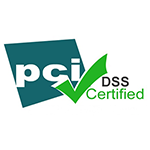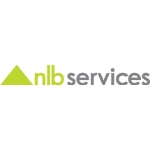© 2025 Next Level Business Services Inc. All Rights Reserved.
What is a career rut and how to deal with it as an employee, employer
By NLB Services
In the professional world, a career is often seen as a path of consistent growth and advancement. But, it often does not go like this for everyone. Many employees find themselves in a cycle of stagnation where the progress looks halted, leading to frustration and dissatisfaction. This state of professional stagnation is known as a career rut. Lack of motivation, burnout, and stagnation in your career indicate that you may be experiencing a career rut. However, there is a difference between temporary dissatisfaction and a genuine situation where you are in a career rut.
Whether you are an employee stuck in a career rut or an employer who is noticing it in his team, understanding its nature and developing strategies to overcome it is essential.
In this blog, we will explore the concept of career rut, how to identify the symptoms and provide actionable strategies for employees to regain their momentum and for employers to support their workforce in navigating these challenging times.
Identifying a Career Rut
The first step is to identify the symptoms of a career rut as you begin to address it. Here are some common causes and symptoms to look out for that can lead to a career rut:
Lack of Motivation
For employees, doing monotonous tasks is a big reason for being demotivated at work, it also wanes the drive to achieve new goals and has a negative impact on productivity, engagement, and overall morale.
Feeling Unchallenged
Working in a role that offers no new challenges or learning opportunities can lead to professional complacency. Employees may feel their skills are underutilized, leading to boredom and dissatisfaction, and the feeling of stagnation takes over ultimately, leading to a situation of career rut.
Absence of Career Progression
Promotions, raises and new responsibilities are great motivators in career progression, but despite being dedicated and hardworking, if they are elusive, the employees may start to question their career trajectory and feel stuck.
Lack of Recognition and Insufficient Support
Employees who are giving their best but are not recognized and valued, fail to see the point of working hard after a while and stop progressing forward. Also, when employees feel they are not adequately supported and are on their own, they stop giving their best for the organization and start feeling disengaged. Only 23% of employees feel engaged at their workplace, as stated by this report from Gallup.
Toxic Work Environment
When the work environment becomes toxic for the employees, they fail to put their heart into the job and just do the bare minimum. It also affects their mental health and lack of productivity, leading them to underperform in their role and think about how to avoid work and people. As per Business Insider, over 30 million people believe that their workplace is somewhat toxic.
Poor Work-life Balance
When employees are burdened with overwork, it causes burnout and affects work-life balance. If it becomes a consistent habit for the organization to overburden the employees, it can lead to a career rut and affect the overall morale of the employees.
Strategies for Employees to Overcome a Career Rut
As an employee, if you are in a career rut, it is time for you to stand up and take charge. Here are some strategies that can help you overcome this situation and regain your professional trajectory:
Self-Assessment
First, conduct a thorough self-assessment that can provide the right information and help identify the root causes of a career rut. See if there is any controllable factor or skill that you can work on and what changes would help you reignite your motivation.
Setting New Goals
It is time to establish new achievable goals that provide direction and purpose. Setting smart goals that align with your personal interests and career aspirations. And create a solid roadmap for future growth. Remember, the whole point of this exercise is for you to have a pathway to get out of your current situation.
Seeking Professional Development
Seeking professional development through different courses, workshops or certifications can help open new avenues for career advancement. An enhanced skill set boosts confidence and encourages you to put your best foot forward in challenging times. As per Association of Talent Development, 70% of your learning happens informally through job-related experiences.
Networking and Mentorship
Having a professional network is always an added advantage, these contacts can lead you to new opportunities and findings. Mentorship from experienced colleagues or industry professionals can help you with guidance and encouragement.
Taking on New Challenges
Embracing new challenges and responsibilities is a good thing for your mental health even if they are outside your current job description, it pushes you to think out of the box, use your skill set in an apt way,and reinvigorate your sense of purpose.
Consider a career change
If, after all the efforts of trying, you still feel stuck and this isn’t what you want, a complete career change may be the best solution. Exploring different industries and roles that align more closely with your passion and strength can fill you with renewed enthusiasm.
Strategies for Employers to Support Employees
Employees are an employer’s most crucial asset and as employers, you can play a pivotal role in helping their employees come out of career ruts. Foster a supportive and engaging work environment for enhanced employee satisfaction, better productivity, and reduced employee turnover. Here are some strategies that you can incorporate to help your employees:
Encouraging Open Communication and Feedback
Offering an open communication channel and having a mechanism of constructive feedback can help your employees feel more connected to their workplace. This mechanism helps employees understand their strengths and areas of improvement and systematically work on to improve them. Recognizing their efforts, both big and small can give a significant boost in their morale.
Offer Professional Development Opportunities
Opening doors to professional development opportunities is another way of helping your employees to focus on their growth. Conducting training programs, and workshops and giving them access to educational resources reflects that you value your employees and are committed to their professional development. Companies with strong development programs see 24% higher profit margins, stated the University of Georgia in their report.
Facilitate Career Advancement
Sit with your employees, ask their managers to work with them, and set a clear pathway for career advancement, this can help employees see a future with the company and will help them engage again. Discussing career goals and offering career growth tips regularly can make employees feel valued, motivated, and connected.
Promoting a Positive Work Environment
A positive work environment is essential for an organization and its employees to thrive. Encouraging a culture of collaboration, a sense of belonging, and inclusivity can help employees open up about their challenges and connect better with their work. If someone is struggling on a personal front, have a conversation with them about whether they need some time off for work-life balance or as an organization you can do something for them.
Facilitate Internal Mobility
If an employee feels they are not using their skills for the right role, it only makes sense to allow them to explore different roles within the organization. Having this channel open will allow employees to think within the organization and not to leave it if they feel they need to switch roles or stagnate. Offer job rotation, cross-training, and internal job postings to keep employees engaged and enable them to develop new skills.
Recognizing and Rewarding Achievements
Having reward and recognition programs can help identify employees who deserve to be praised. When your employees give their 100%, it is only fair to reward them or recognize them. Appreciate the efforts that they are putting in for the success of your organization and it will motivate them to keep doing better.
Conclusion
A career rut is a challenging phase, but with the right strategies and planning, you can start overcoming a career rut. It is a part of professional life that either you or someone you know may be experiencing
For employees, recognizing the signs of career stagnation and taking proactive steps to overcome it can help revitalize motivation and move the trajectory toward career satisfaction.
Employers, on the other hand, hold the responsibility to ensure their employees don’t fall into this situation. They can create a supportive work environment, promote professional development opportunities, and execute an open communication channel for constructive feedback to help their employees perform their best and enhance employee motivation. Go ahead to use the strategies in this blog as your guiding light in your journey of coming out of a career rut or helping your employees move out of it. Turn stagnation into growth and transformation opportunities, for a fulfilling career journey for all.
Talent Solutions








